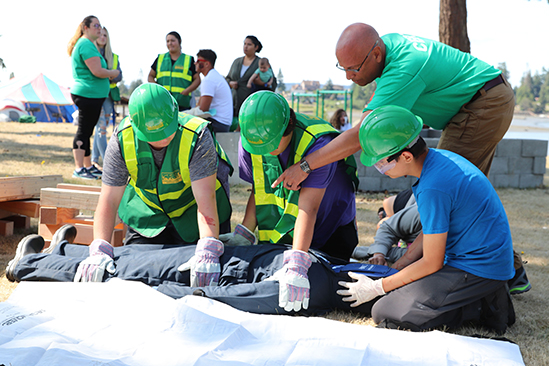
By Kalvin Valdilez, Tulalip News
“HELP!” cried a woman’s voice coming from the Tulalip Youth Council room. “The building’s collapsing, we have people in here. We need help.”
Springing into action like superheroes, fifteen local teenagers unzipped green backpacks which read Community Emergency Response Team (CERT) across the front. Withdrawing vests, gloves, hard hats and goggles, the youth quickly put on their protective gear before assembling near the entrance of the building. Together, the team elected Youth Council member, Jonathan “JD” Rinker, to take lead.
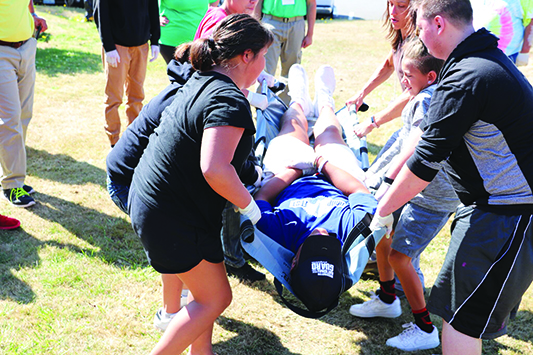
After JD instructed two people to set up a triage area, he called upon one of his peers to help him conduct a quick visual walkthrough of the building. Upon returning, JD reported the estimated amount of people trapped in the building and their injuries, as well as the amount of damage inside the Youth Council chambers.
“Some of the injuries include a person with a bolt jammed in his leg. People have open wounds and large cuts on their arms and faces, some are trapped underneath tables and desks and their legs are tangled up in chairs.”
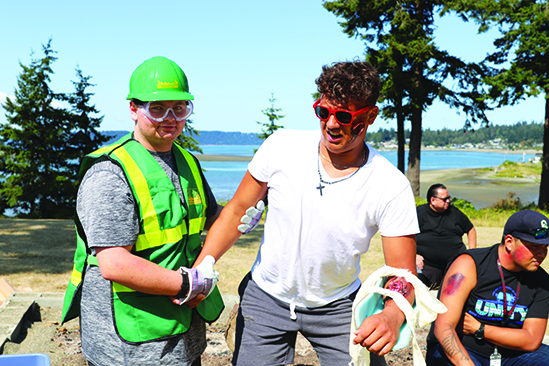
The teens paired up into twos and entered the room. Tending to the wounded who needed immediate assistance first, the teams carried, walked and wheeled the injured one-by-one outdoors to safety. Although this was only a drill, the group of young adults took the disaster simulation very seriously, treating the situation as though it was happening in real time and evacuating the building safely, cautiously and in a timely manner.
“My role was to send my team in and get those people help when the building began to collapse after an earthquake,” JD stated. “But first we had to make sure the area was safe for us. As soon as we got everyone out, we helped stop the bleeding on several individuals, we tended to people’s ailments and we placed them in these designated areas categorized by color. Green is minor injuries, yellow’s non-life-threatening injuries, red is life threatening and black is deceased. During the process, I helped arrange who went to which group and assessed what types of injuries they had. And when the first responders arrived, I gave them a full report and the status of each person.”
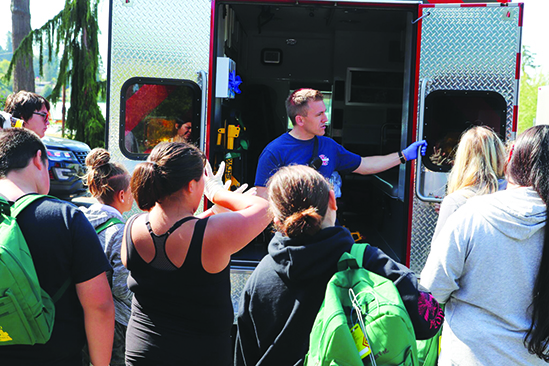
Teen CERT returned to Tulalip for its second year during the week of August 12-16. Hosted by the Tulalip Office of Emergency Management, the trainings provide local youth with the knowledge of how to be best prepared when disaster strikes, learning safety skills to assist the elders, youth and injured adults of the community while first responders are on the way.
Last year, Tulalip became the first tribe nationwide to offer Teen CERT to a reservation-based community. Teaming up with Youth Services and Critical Ops LLC., Emergency Management brought the preparedness training to the community to ensure safety when natural disasters or extreme weather occurs in the area.
“To my knowledge, we’re the only tribe that is doing tribal Teen CERT on an annual basis,” said Ashlynn Danielson, Tulalip Emergency Preparedness Manager. “We hope to continue receiving our funding to provide this training once a year, every summer. This year everything was interactive-based, everything we did as teams or pairs. And we had more upbeat energy, the kids were participating right out the gate. We had a good mixture of ages. The younger ones could turn to the older students and get direction, to have someone engage initiative. Before they started the disaster simulation, we staged everybody and established our role players. We used earthquake because we recently had an earthquake, and that’s something that is a no notice event that can happen to our area regularly.”
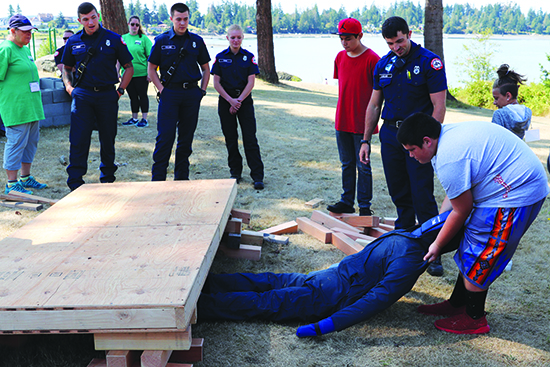
Every late fall and throughout the winter, windstorms are a regular occurrence, causing power outages and property damage throughout Tulalip. This past winter, Washington State experienced a snow storm unlike any other. Some areas saw upwards of a foot of snow, breaking local snowfall records over the month-long blizzard. On the Tulalip reservation specifically, community members hunkered down as many people couldn’t leave their driveways and didn’t want to risk driving in the heavy snow. In many cases, during wind and snow storms, the only road leading out of Tulalip is often blocked by fallen trees and powerlines.
According to the National Oceanic and Atmospheric Administration (NOAA), climate change is the main contributing factor to natural disasters. As the earth’s atmosphere continues to heat up, the world will experience disasters, such as last year’s hurricanes along the east coast and the wildfires on the west coast, more frequently and at a larger magnitude. In 2018, the United States had sixteen extreme disasters, totaling a record $306 billion in damages and 355 fatalities.
“We’re located far away from the hospitals, far from help,” expressed JD. “We need to be able to help our own people in any way we can, until the first responders get here. It was exciting. It’s important for the youth to be involved. In case a disaster or if anything happens, everyone should have an idea of what to do and how to help.”
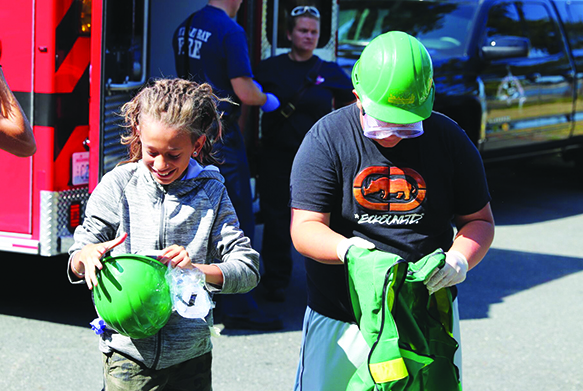
Throughout the week, the youth were taught how to react and respond in emergency situations, practicing everything from fire safety, medical operation and triage, team organization, utility control, damage assessment, and search and rescue.
“We broke the days up by themes,” said Critical Ops Trainer, Chelsea Treboniak. “The first day we focused on home and personal preparedness. We looked at what a bugout bag is, how to look at your surrounding environment and understand what you might need in case of an emergency. The next day we got a bit more broad in nature and attacked fire at large. We went over what a fire extinguisher is and how to use it, and we practiced skills with the fire department. We talked medical operations, everything from search and rescue to how to leverage and crib to rescue someone who’s stuck. And, also how to treat, triage and set up a causality collection point. Which brought it all to the disaster simulation where they got to put all those skills into practice.”
The teens were visited by a number of guests during the five-day training including the Tulalip Bay Fire Department and members of the Everett Fire Department, as well as local search and rescue dogs.
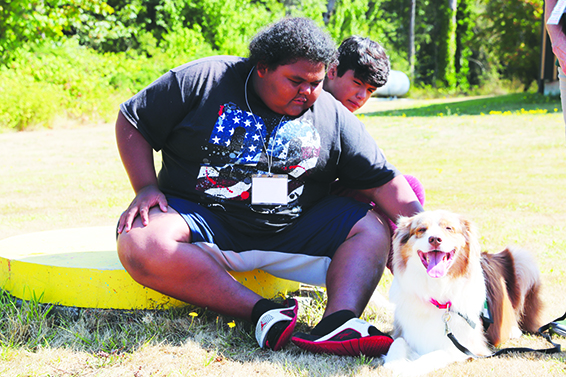
“The dogs were well-trained and they help people out,” said Teen CERT alum Quintin Yon-Wagner. “They help retrieve different items, find people and they are a great comforting companion especially during disasters or after traumatizing events.”
Quintin returned this year to assist with Teen CERT, offering his insight and encouraging his peers during the hands-on training.
“There are certainly times where I had to use my CERT training in real life scenarios,” he stated. “Just today, a kid hurt himself on the field and I was able to help him out. A lot of kids don’t want to come out and spend their summer learning, but you can use this training in real life and you get certified. I encourage kids to bring their friends next year and treat it as a social event, it’s super fun to learn about things you probably never heard of, or never will, in school. It’s a whole different perspective on how to help and give back to your community. When disaster strikes, we need people to step up because the first responders aren’t necessarily going to be nearby.”
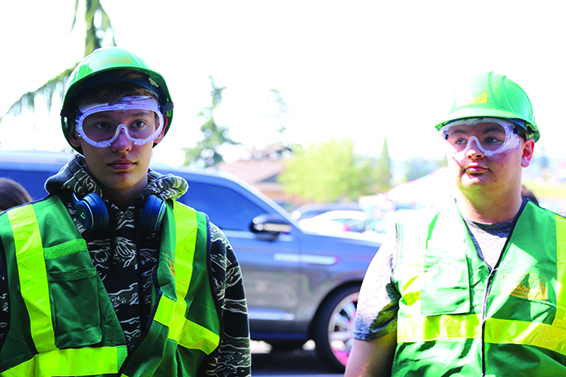
After spending a week at the Youth Council room learning how to be properly prepared for disaster, the teens joined their younger peers who were concluding their time at Lushootseed Language Camp with a performance. In front of a gym full of language warriors and supportive community members, the Teens received their CERT certifications on the morning of August 16. To commemorate the moment and congratulate the teens, the young Lushootseed campers offered a traditional song to the CERT graduates.
“This year was a success,” expressed Ashlynn. “Throughout the week they learned how to work as a team. They now have some tools and skills and are able to help. Every year we are getting more student involvement, interest and participation. I hope their main take away is to share this with their families, that way they’ll be more prepared individually and know that they are a just as important as everyone else and can play a big role in saving people’s lives.”
The Tulalip Office of Emergency Management will continue hosting their regularly scheduled CERT trainings, the next one held this upcoming fall. To stay updated on the latest storm information in the Tulalip area, text the word ‘STORM’ to 30644 for text alerts regarding inclement weather, road closures and more.